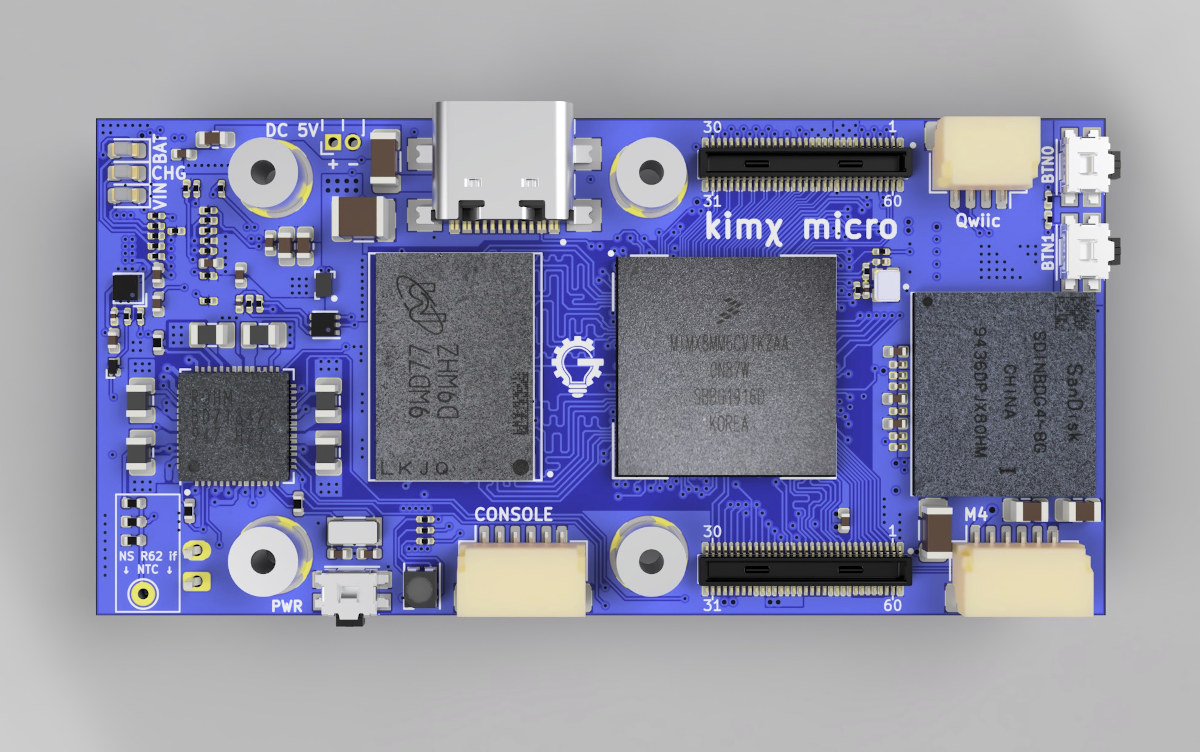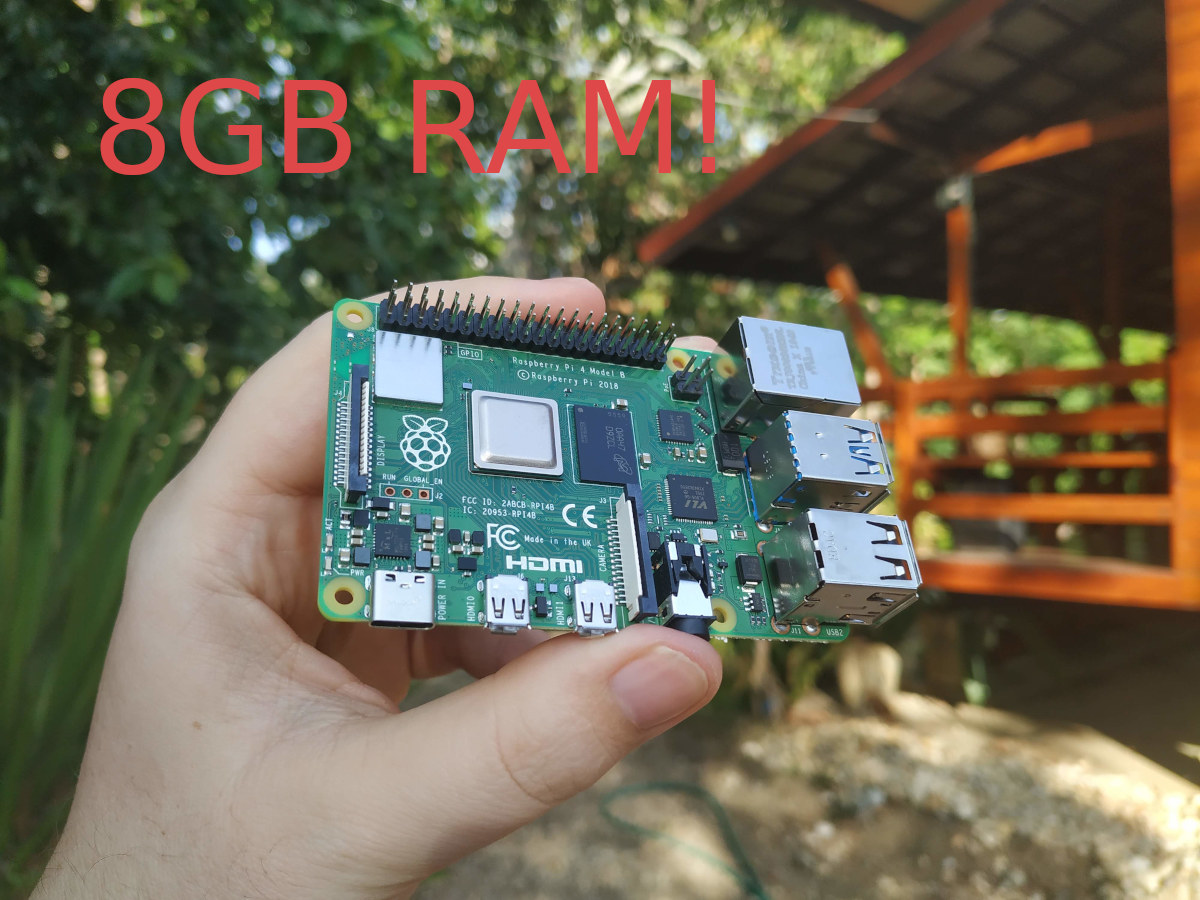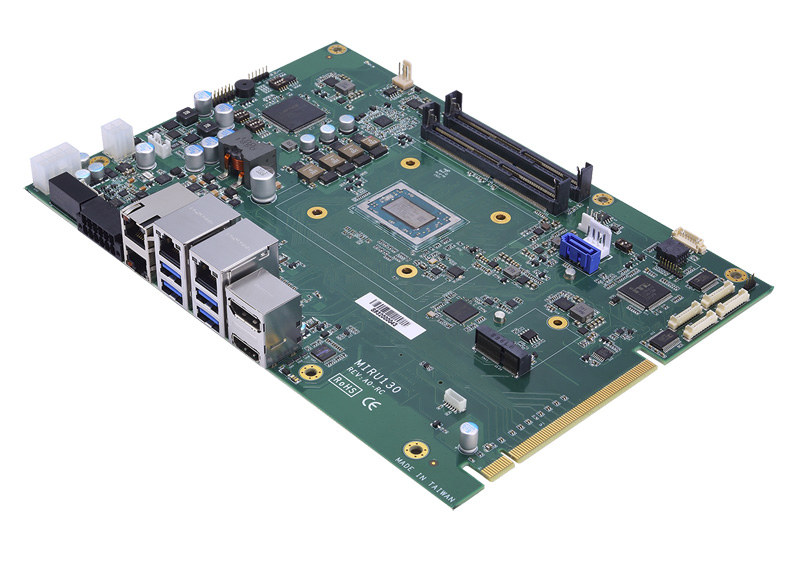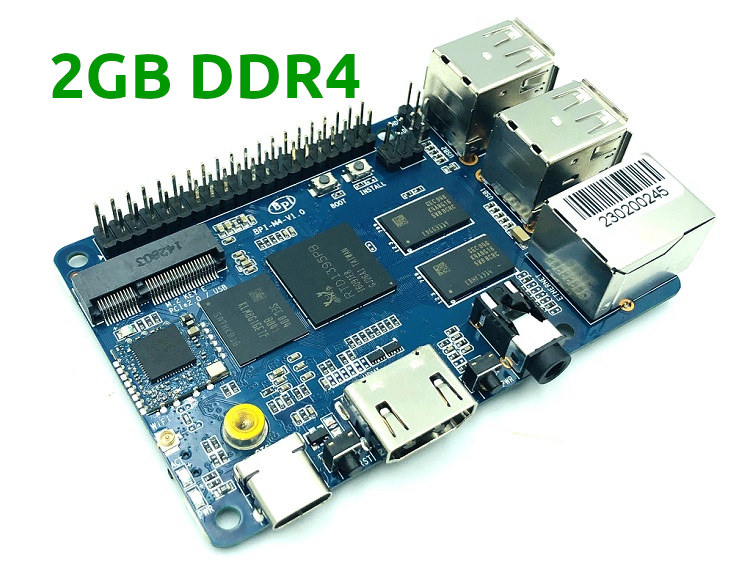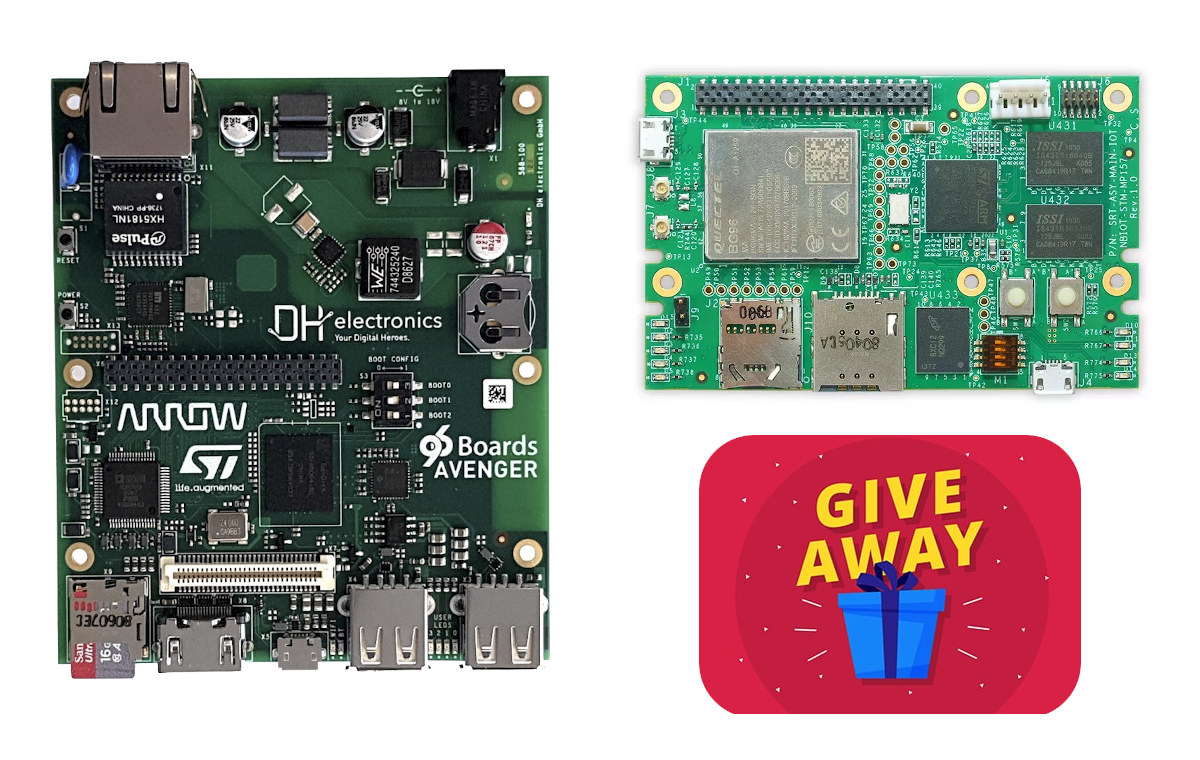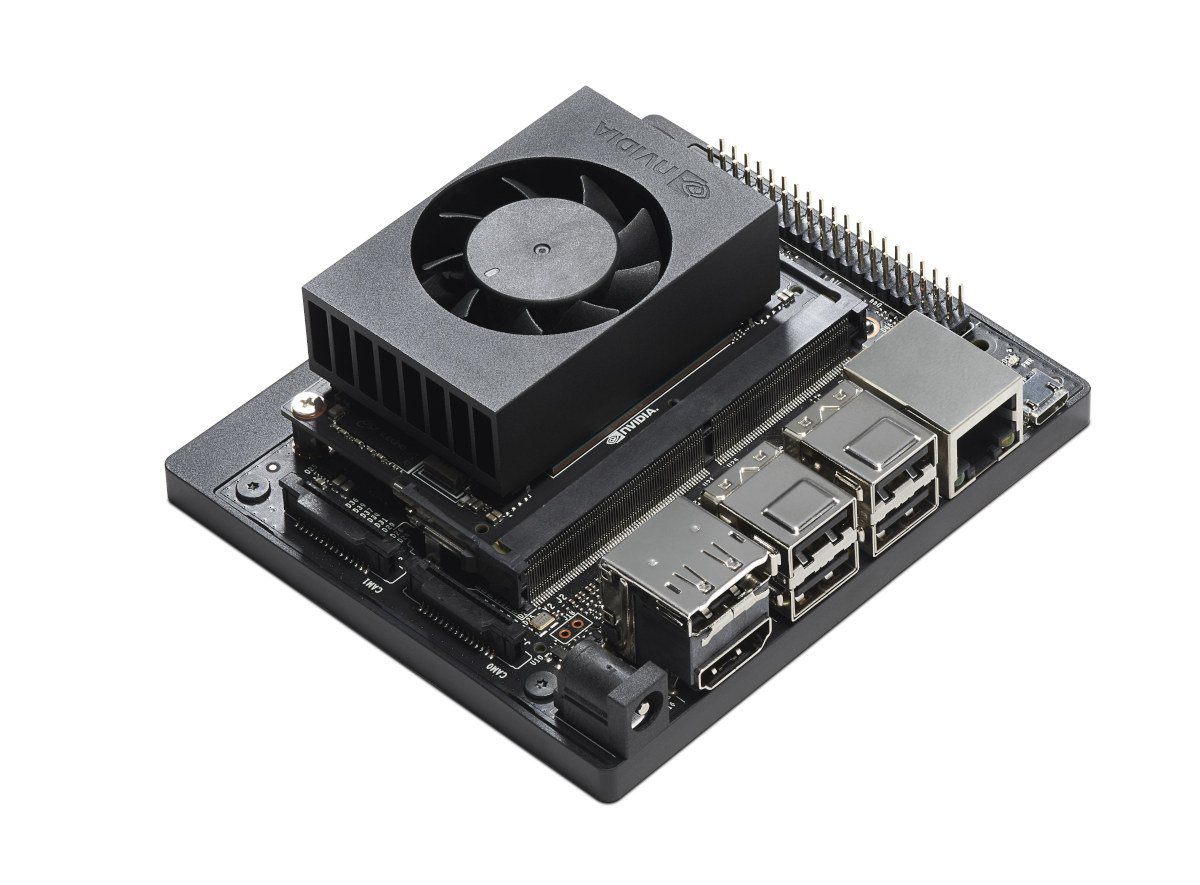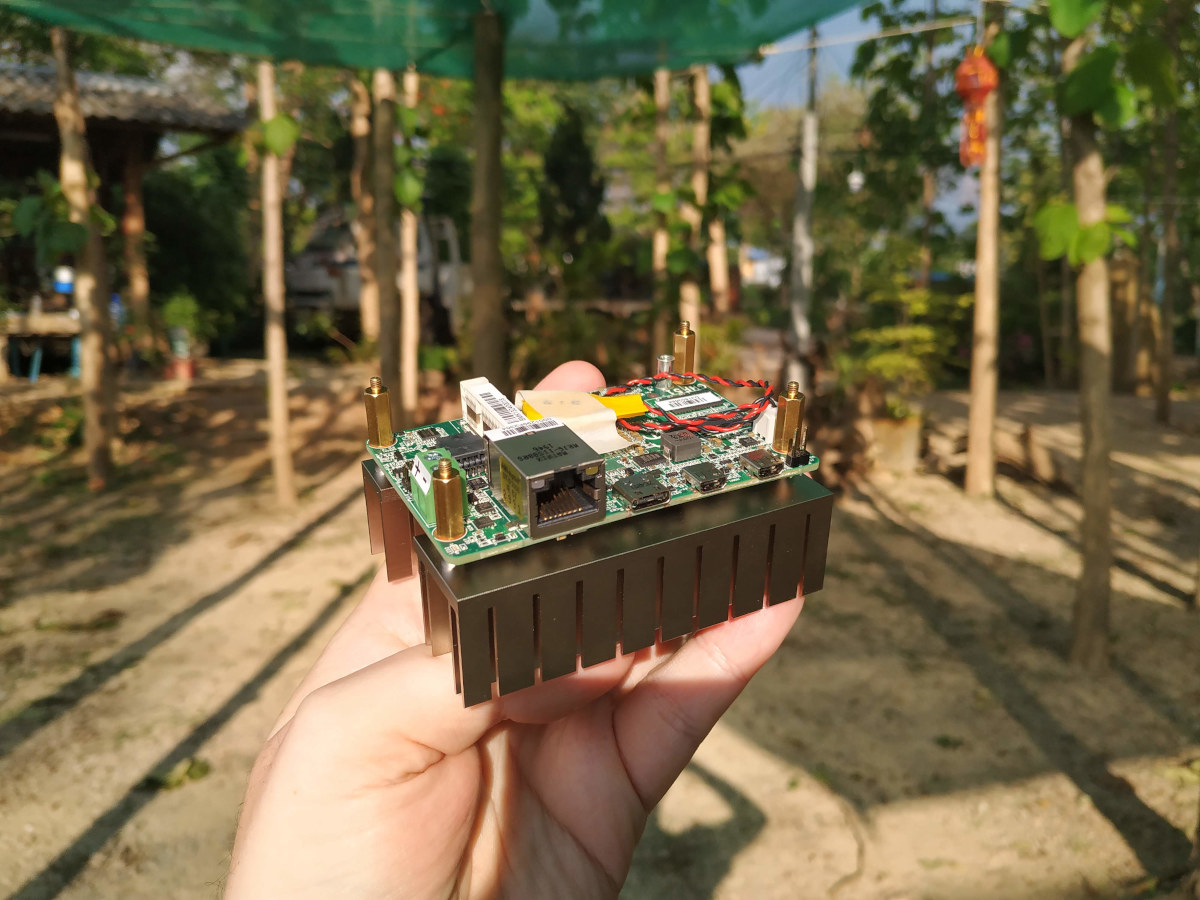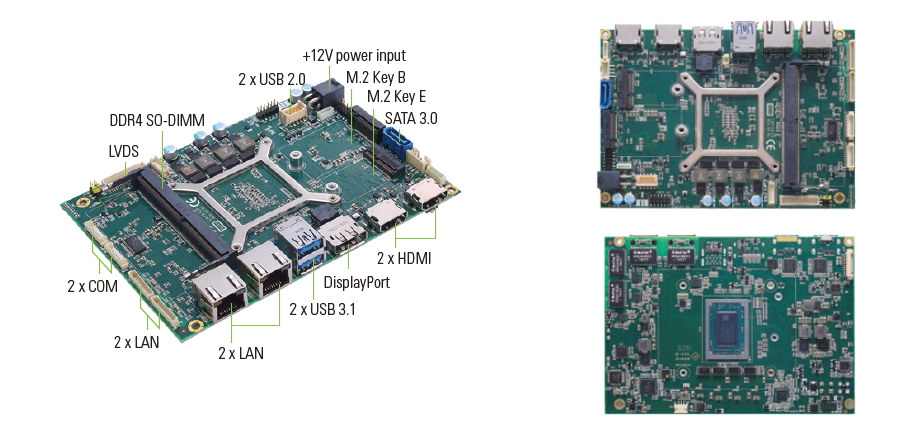The Raspberry Pi Zero (W/WH) board is great because of its size, price tag, and software support, but processing power is limited with Broadcom BCM2735 SoC only offering a single ARM11 core clocked at 1 GHz. There are already some more powerful boards in a similar form factor include Banana Pi M2 Zero or FriendlyELEC NanoPi Duo2 both equipped with an Allwinner quad-core Cortex-A7 processor, but there’s another upcoming board with NXP i.MX 8M Mini quad-core 64-bit Cortex-A53 processor. Meet Kimχ Micro (pronounced Kimchi Micro). Kimχ Micro (preliminary) specifications: SoC – NXP i.MX 8M Mini single to quad-core Cortex-A53 processor @ up to 1.8 GHz, Cortex-M4F real-time core @ up to 400 MHz, Vivante GC NanoUltra 3D GPU + GC320 2D GPU, VPU for 1080p60 video decoding and encoding; (Single and dual-core version of NXP i.MX 8M Mini processor are also compatible) System Memory – 2GB LPDDR4 Storage – 8GB […]
Raspberry Pi 4 Gets 8GB RAM, Raspbian 64-bit (Beta)
The Raspberry Pi 4 Model B was launched in June 2019 with Broadcom BCM2711 Arm Cortex-A72 processor coupled with either 1, 2, or 4GB LPDDR4 RAM. But there were expectations that a Raspberry Pi 4 with 8GB RAM or an 8GB eMMC flash may be eventually launched, as some of the user guides read “Product name: Raspberry Pi 4 Model B 1 GB, 2 GB, 4 GB + 8 GB variants”. We now know the answer as the Raspberry Pi Foundation has just introduced Raspberry Pi 4 with 8GB RAM. Raspberry Pi 4 8GB specifications are the same except for the RAM capacity: SoC – Broadcom BCM2711 quad-core Cortex-A72 (ARMv8) @ 1.5GHz with VideoCore VI GPU supporting OpenGL ES 3.0 graphics System Memory – 8GB LPDDR4 Storage – MicroSD card slot Video Output & Display I/F 2x micro HDMI ports up to 4Kp60 3.5mm AV port with composite video (and […]
Ryzen Embedded SBC is Made for Real-time AI Vision, Conveyor Belt Tracking
Axiomtek just recently introduced CAPA13R AMD Ryzen Embedded V1605B/V1807B SBC in 3.5″ embedded SBC form factor, and the company is now back with another, larger Ryzen Embedded SBC: Axiomtek MIRU130. Why would they launch yet another Ryzne Embedded board two weeks later? Different applications. While CAPA13R targets various graphics-intensive applications ranging from medical imaging to smart digital signage, MIRU130 appears to be especially focused on real-time vision-based AI applications with PoE and USB ports for cameras, and integrated “real-time vision I/Os” such as trigger inputs, LED lighting controllers, camera trigger outputs and an encoder input designed for conveyor tracking. MIRU130 SBC specifications: SoC (One or the other) – AMD Ryzen Embedded V1807B or V1605B quad-core processor with Radeon Vega 8 graphics; V1807B: 35-54W TDP; V1605B: 12-25W TDP System Memory – 2x 240-pin DDR4-2400 SO-DIMM, up to 16GB RAM Storage 1x SATA-600 1x M.2 Key B (SATA, USB 2.0, PCIe x2 […]
Banana Pi BPI-M4 SBC Gets 2GB RAM, Sells for $43
First unveiled in February 2019, Banana Pi BPI-M4 is a single board computer based on Realtek RTD1395 quad-core Cortex-A53 4K media processor and following Raspberry Pi 3B+ form factor pretty closely. BPI-M4 officially launched in June 2019 for just $38 with 1GB DDR4 RAM, but despite the 2GB RAM option being listed in the specification, the 2GB version of the board was not available, at least on Aliexpress. The good news is that Banana Pi BPI-M4 with 2GB RAM has just started selling for $43 plus shipping on Aliexpress, or in Taobao if you based in China. Banana Pi BPI-M4 2GB specifications: SoC – Realtek RTD1395 quad-core Arm Cortex-A53 processor with Mali-470 MP4 GPU System Memory – 2GB DDR4 RAM Storage – 8GB eMMC flash, micro SD slot up to 256GB, M.2 NVMe SSD Video Output – HDMI 2.0b port up to 4K @ 60 Hz, HDR support Video Decode […]
Stinger96 (NB-IoT + eMTC) and Avenger96 96Boards STM32MP1 SBCs Giveaway
96Boards, Arrow Electronics, STMicro, and Shiratech have joined hands to organize a giveaway event with up to 500 Avenger96 or Stinger96 boards going to lucky winners. I’ve already covered STM32MP1 powered Avenger96 SBC compliant with 96boards CE Extended specification, but I’ve never heard about Stinger96 board, so before going into the giveaway rules, let’s have a closer look at this new 96Boards board designed by Israel based Shiratech. Stinger96 96Boards NB-IoT + eMTC SBC Specifications: SoC – STMicro STM32MP157 dual-core Arm Cortex-A7 processor @ up to 650 MHz (4158 CoreMark) with Arm Cortex-M4F MCU @ up to 200 MHz (673 CoreMark), 708KB internal SRAM System Memory – 256M x 32-bit DDR3 (1GB RAM) Storage – 8Gbit SLC NAND Flash, MicroSD card slot Connectivity Gigabit Ethernet header (via Microchip KSZ9031RNX) GPS, NB-IoT & eMTC (LTE Cat M1) IoT cellular connectivity with 2G fallback via Quectel BG96 module, SIM card slot, and […]
NVIDIA Introduces Jetson Xavier NX Developer Kit, and Cloud-Native Support
NVIDIA Jetson Xavier NX SoM was launched last month for $459. But while some third-party carrier boards were also announced at the time, the company had yet to offer Jetson Xavier NX Developer Kit as they did for Jetson Nano. But as GTC 2020 conference is now taking place in the kitchen of Jensen Huang, NVIDIA CEO, the company had plenty to announce including Jetson Xavier NX Developer Kit as well as “Cloud-Native” support for all Jetson boards and modules. NVIDIA Jetson Xavier NX Developer Kit Specifications: CPU – 6-core NVIDIA Carmel ARMv8.2 64-bit processor with 6 MB L2 + 4 MB L3 cache GPU – NVIDIA Volta architecture with 384 NVIDIA CUDA cores and 48 Tensor cores Accelerators 2x NVDLA Engines 7-Way VLIW Vision Processor Memory – 8 GB 128-bit LPDDR4x 51.2GB/s Storage – MicroSD slot, M.2 Key M socket for NVMe SSD Video Output – HDMI and DisplayPort […]
DFI GHF51 AMD Ryzen Embedded SBC Review – Part 1: Unboxing and Assembly
Earlier this year, Taiwan based DFI launched GHF51 Ryzen Embedded R1000 SBC offering some similarities with Raspberry Pi 4 SBC, including a business card form factor, two Micro HDMI ports, and Gigabit Ethernet. But the comparison stopped there, as DFI GHF51 board will vastly outperform the Raspberry Pi 4 boards both in terms of CPU and graphics performance due to AMD Ryzen processor, and DFI embedded board does not target hobbyists nor students, but instead business and industrial customers. The company recently contacted CNX Software, and send GHF51 board with all accessories for review. I was pretty excited since it’s the first AMD Ryzen Embedded SBC that I’ll review, so it should be particularly interesting. I’ve just received the sample and will do a two-part review starting with unboxing and kit assembly, before publishing the second part of the review reporting on my experience with Windows 10 and/or Ubuntu 20.04. […]
AMD Ryzen Embedded V1605B/V1807B SBC Offers Four GbE Interfaces, Four Video Outputs
We’ve written about several AMD Ryzen Embedded V1000 SBCs and many of them fully leverage the processor multimedia capabilities with support for four 4K displays, but Axiomtek CAPA13R 3.5″ Embedded SBC adds an extra twist by also offering four Gigabit Ethernet ports. The board is equipped with either Ryzen Embedded V1807B or V1605B, up to 16GB RAM, and offers two M.2 sockets for storage and connectivity. Four independent display support is achieved through a mix of three types of video output including two HDMI ports, one DisplayPort, and one LVDS connector. Axiomtek CAPA13R V1605B/V1807B SBC specifications: SoC – AMD Ryzen Embedded V1807B ( 35-54W) or V1605B (12-25W) quad-core processor with Radeon Vega 8 graphics System Memory – 1 x 260-pin SO-DIMM socket for up to 16GB DDR4-2400 (V1605B), 16GB DDR4-3200 (V1807) Storage – SATA 3.0 port (6Gbps), support for M.2 SATA/NVMe SSD in 22x42mm or 30x42mm form factor (Key B […]


